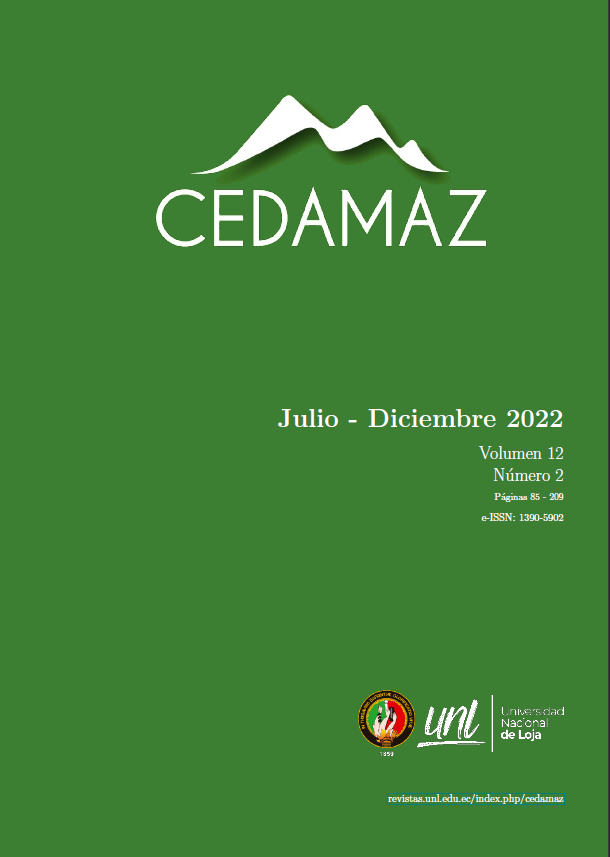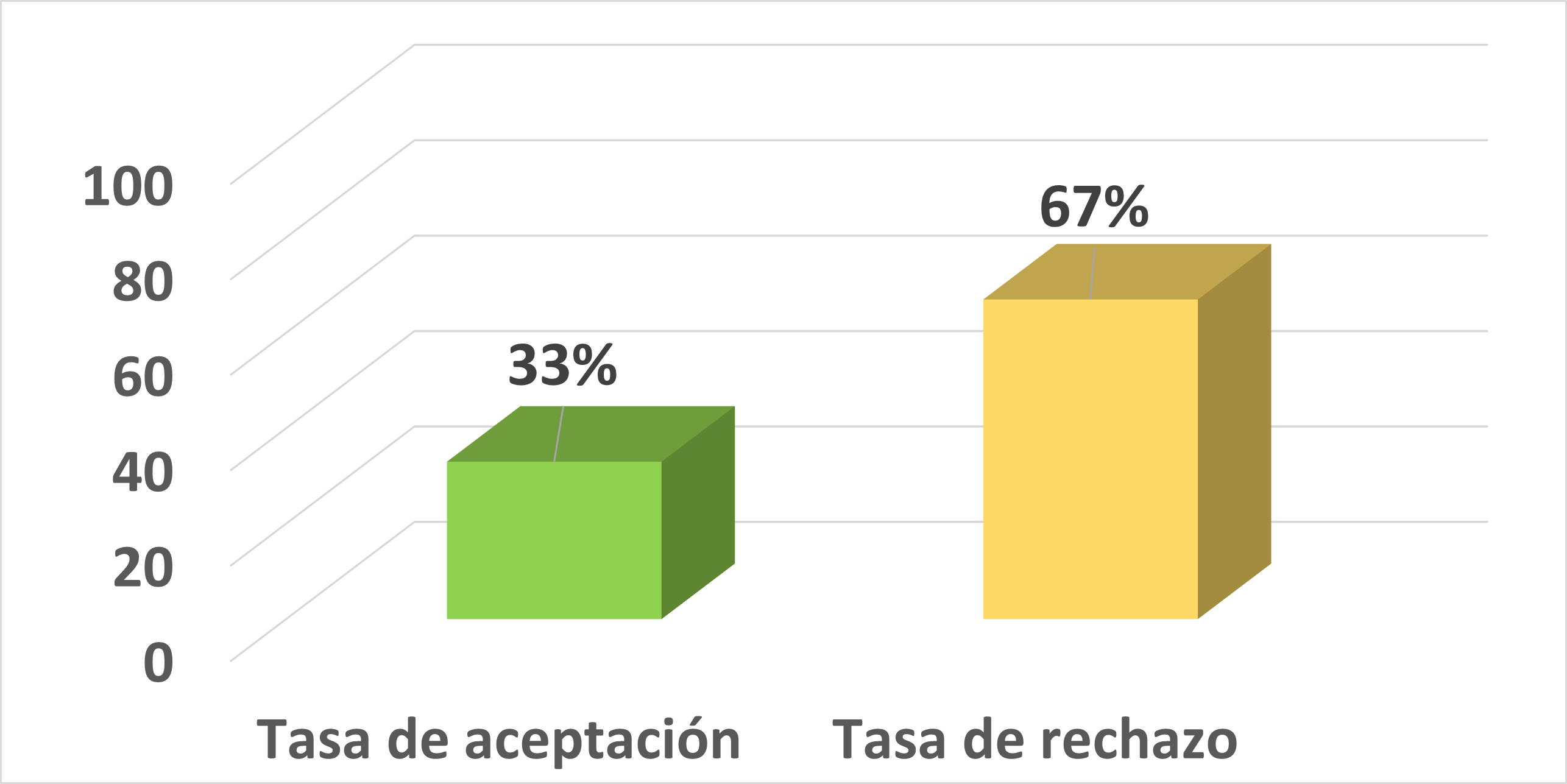Nematodes associated with weeds in San Lorenzo, Paraguay
DOI:
https://doi.org/10.54753/cedamaz.v12i2.1731Keywords:
Phytoparasitic nematodes, Weed plants, Tylenchus, AphelenchoidesAbstract
Weeds act as a reservoir for nematodes, even in non-crop seasons. The detection of these associations can help to identify and predict the species of phytoparasitic and beneficial nematodes ocurring in the soil, which may vary depending on the weed species, in this way, nematodes that potentially affect future crops could be known. The objective was to identify genera of nematodes associated with Cenchrus echinatus, Acanthospermum hispidum, Ipomoea nil, Cyperus esculentus and Urochloa sp., the most frequent weed species in crop production plots in San Lorenzo, Paraguay. The extraction of nematodes was carried out from soil samples of the rhizosphere of each weed species, by the Cobb method and flotation in sugar, and the association was determinated by identification at the genus level and quantification of the specimens. The most abundant nematode found was Tylenchus (42%), which was associated with all weed species studied. 32.5% corresponded to specimens of the plant parasite genus Aphelenchoides, detected in A. hispidum, I. nil, C. esculentus and Urochloa sp. Other plant parasite genera detected were Helicotylenchus (7.1% of the population), Dorylaimus (4.7%), Tylenchorhynchus (1.6%) and Hemicycliophora (1.6%). In addition, two genera of saprophagous nematodes were identified: Mononchus (6.7% of the population) associated with C. echinatus, A. hispidum, I. nil and Urochloa sp., and Cephalobus (3.9%), associated with C. echinatus and Urochloa sp. This is the first study that explore the association of nematodes with weed species in Paraguay.References
Anwar, SA; Zia, A; Javed, N; Shakeel, Q. 2009. Weeds as reservoir of nematodes. Pakistan Journal of Nematology. 27(2): 145-153.
Bellé, C, Kulczynski, S., Kaspary, TE; Kuhn, PR. 2017. Weeds as alternative hosts to Meloidogyne incognita. Nematropica. 47(1): 26-33.
Caballero-Mairesse, G; Resquín-Romero, G; Lugo, F; Gini, A; Alcázar, L; Cano, D; López-Nicora, HD. 2021. Distribución y abundancia de nemátodos fitoparásitos asociados al cultivo de yerba mate en Itapúa: un riesgo potencial e inminente. Investigaciones y Estudios UNA. 12(2): 11-27. DOI: https://doi.org/10.47133/IEUNA2122b
Carvalho, LB. 2013. Plantas Daninhas. 1 ed. Santa Catarina, BR: Edición del autor. 82 p. Casanueva-Medina, K; Fernández-Gonzálvez, E; Tejeda, M; Vidal, U; Paredes Rodríguez, E. 2016. Malezas hospedantes de fitoparásitos en diferentes zonas productoras de banano y plátano en las provincias de Artemisa y La Habana. Fitosanidad. 20(3): 125- 129.
Cazal-Martínez, CC; Reyes-Caballero, YM; Chávez, A; Pérez-Estigarribia, PE; Rojas, A; Arrúa, A; Moura-Mendes, J; López-Nicora, HD; Kholi, MM. 2021. First report of leaf blight caused by Pyricularia pennisetigena on Cenchrus echinatus in Paraguay. Plant Disease. 105(11): 3758. DOI: https://doi.org/10.1094/PDIS-02-21-0287-PDN
Cobb, NA. 1918. Estimating the nema population of the soil, with special reference to the sugar-beet and root-gall nemas, Heterodera schachtii Schmidt and Heterodera radicicola (Greef) Muller, and with a description of Tylencholaimus aequalis n. sp. USDA Agricultural Technical Circular. 1: 1-47.
Doucet, M. 1992. Asociaciones entre nemátodos fitófagos y malezas en la República Argentina. Agriscientia. 9 (2): 103-112.
Egea-Elsam, J; Mereles, F; Céspedes, G. 2018. Malezas comunes del Paraguay: manual de identificación. 1 ed. Asunción, PY: Pefaur Comunicaciones. 395 p.
Ferraz, LC, Pitelli, RA; Furlan, V. 1978. Nematoides associados a plantas daninhas na região de Jaboticabal, SP: Primeiro relato. Planta Daninha. 1(1): 5-11. DOI: https://doi.org/10.1590/S0100-83581978000100001
Ferraz-Ramos, R; Kaspari, ET; Rubin-Balardin, R; Dalla-Nora, D; Antonioli, ZI; Bellé, C. 2019. Plantas daninhas como hospedeiras dos nematoides-das-galhas. Revista Agronomia Brasileira. 3: 1-3. DOI: https://doi.org/10.29372/rab201906
Fuentes, C. 1986. Metodologías y técnicas para evaluar las poblaciones de malezas y su efecto en los cultivos. Revista COMALFI. 13: 29-50.
Guzmán-Hernández, TJ; Hernández-Villalobos, S; Varela-Benavides, I; Durán-Mora, J; Montero-Carmona, W. (2011). Nemátodos fitoparásitos asociados al arroz en las regiones Huetar Norte y Huetar Atlántica de Costa Rica. Agronomía Mesoamericana. 22 (1): 21-28. DOI: https://doi.org/10.15517/am.v22i1.8662
Gharabadiyan, F; Jamali, S; Yazdi, AA; Hasan-Hadizadeh, M; Eskandari, A. 2012. Weed hosts of root-knot nematodes in tomato fields. Journal of Plant Protection Research. 52(2): 230-234. DOI: https://doi.org/10.2478/v10045-012-0036-1
Jenkins, WR. 1964. A rapid centrifugal-flotation technique for separating nematodes from soil. Plant Disease Reporter. 48(692).
Kirsch, VG; Kulczynski, SM; Bauer-Gomes, C; Calderan Bisognin, A; Gabriel, M; Bellé, C; Lima-Medina, I. 2016. Caracterização de especeis de Meloidogyne e de Helicotylenchus associadas a soja no Rio Grande do Sul. Nemantropica. 46(2): 197-208.
Laasli, SE.; Mokrini, F.; Lahlali, R.; Wuletaw, T.; Paulitz, T.; Dababat, AA. 2022. Biodiversity of nematode communities associated with wheat (Triticum aestivum L.) in Southern Morocco and their contribution as soil health bioindicators. Diversity. 14(194): 1-27. DOI: https://doi.org/10.3390/d14030194
Lima-Medina, I; Bravo, RY; Aguilar-Gomez, MI. 2018. Nemátodos fitoparásitos asociados al cultivo de maíz (Zea mais L.) en las regiones de Puno y Cusco. Journal of High Andean Research. 20(1): 31-38. DOI: https://doi.org/10.18271/ria.2018.328
Lopez, HF; Pushpa-Soti, GB; Jagdale, PG; Racelis, A. 2021. Weeds as hosts of plant parasitic nematodes in subtropical agriculture systems. Subtropical Agriculture and Envi ronments. 72: 1-6.
López-Nicora, HD; Soilán-Duarte, LC; Caballero Mairesse, GG; Grabowski-Ocampos, CJ; Enciso Maldonado, GA. 2021. Manual de nematologia agrícola: bases y procedimentos. Asunción, PY: Grupo Editorial Atlas. 90 p. DOI: https://doi.org/10.53997/DFXA5914
Lopez-Nicora, H, Enciso-Maldonado, GA; Caballero-Mairesse, GG; Sanabria-Velázquez, AD; Armandans-Rojas, AJ; Soilán-Duarte, LC; Cristian Javier Grabowski-Ocampos, Resquin-Romero, GA; Colmán, AA; Pedrozo-Fleitas, LM; Valiente-Raidán, HN; Ramírez-Cardozo, FA; Ruiz-Zastrow, V; Cubilla-Andrada, MM. 2022. Distribution and abundance of nematodes in horticultural production in Paraguay. Plant Health Progress (ja). DOI: https://doi.org/10.1094/PHP-01-22-0001-S
Lugo, Z; Crozzoli, R; Perichi, G; Medina, R; Castellano, G. 2007. Nemátodos fitoparasíticos asociados a plantas cultivadas y silvestres en el municipio miranda del estado Falcón, Venezuela. Fitopatología. 20 (1): 15-20.
Moens, M; Perry, RN; Starr, JL. 2009. Meloidogyne species: a diverse group of novel and important plant parasites. In: Perry, RN; Moens, M; Starr, JL (Eds.). Root-knot Nematodes. Wallingford, UK: CABI Publishing. 17 p. DOI: https://doi.org/10.1079/9781845934927.0001
Murray, L; Thomas, SH; Schroeder, J; Kreider, S; Ou, Z; Trojan, JM; Fiore, C. 2011. Modeling the root-knot nematode/nutsedge pest complex: perspectives from weed science, nematology and statistics. Conference on Applied Statistics in Agriculture. 121-158. DOI: https://doi.org/10.4148/2475-7772.1051
Nogueira-Marques, B; Kobayasti, L; Oliveira-Arieira1, G; Faria, DA; Dallabrida-Avelino, AC; Gonçalves-Abreu, J; Alves-Martins, L; Silva-Moreira, GC; Días-Oliveira, L; Terzi, BG. 2019. Nematodes associated to tropical forages in pasture areas. Journal of Experimental Agriculture International. 36(4): 1-10. DOI: https://doi.org/10.9734/jeai/2019/v36i430239
Norton, DC. 1978. Ecology of plant-parasitic nematodes. Soil Science. 127(1): 63. Ntidi, KN; Fourie, H; McDonald, AH; De Waele, D; Mienie, CM. 2012. Plant-parasitic nematodes associated with weeds in subsistence agriculture in South Africa. Nematology. 14(7): 875-887. DOI: https://doi.org/10.1163/156854112X632187
Pastén, AM; Benítez, E; Rivero, R; Pastén, M; Benítez, MS. 2017. Anuario Climatológico 2017: Estación Meteorológica de la UNA. San Lorenzo, Paraguay: Centro Meteorológico de la Facultad Politécnica, Universidad Nacional de Asunción. 33 p.
Pereira-Braz, GB.; Oliveira, RS; Constantin, J; Raimondi, RT; Ribeiro, LM; Gemelli, A; Takano, HK. 2016. Plantas daninhas como hospedeiras alternativas para Pratylenchus brachyurus. Summa Phytopathologica, 42(3): 233-238. DOI: https://doi.org/10.1590/0100-5405/2129
Pinheiro, JB; Silva, GO; Biscaia, D; Macedo, AG; Correia, NM. 2019. Reaction of weeds, found in vegetable production areas, to root-knot nematodes Meloidogyne incognita and M. enterolobii. Horticultura Brasileira. 37(4): 445-450. DOI: https://doi.org/10.1590/s0102-053620190413
Quénéhervé, P; Chabrierb, C; Auwerkerkena, A; Toparta, P; Martinya, B; Marie-Lucea, S. 2006. Status of weeds as reservoirs of plant parasitic nematodes in banana fields in Martinique. Crop Protection. 25: 860-867. DOI: https://doi.org/10.1016/j.cropro.2005.11.009
Ravichandra, NG. 2014. Horticultural nematology. New Dehli: Springer India. 523 p. Robles H, JP; Moreno P, L. 2011. Densidad poblacional de nemátodos fitoparásitos en suelo de Irapuato, Guanajuato. Revista Mexicana de Fitopatología. 29(2): 172-174. Rocha, LF; Gage, KL; Pimentel, MF; Bond, JP; Fakhouri,
AM. 2021. Weeds hosting the soybean cyst nematode (Heterodera glycines Ichinohe): management implications in agroecological systems. Agronomy. 11(1): 146. DOI: https://doi.org/10.3390/agronomy11010146
Rybarczyk-Mydlowska, K; Dmowska, E; Kowalewska, K. 2019. Phylogenetic studies on three Helicotylenchus species based on 28S rDNA and mtCOI 526 sequence data. Journal of Nematology. 51: 1-17. DOI: https://doi.org/10.21307/jofnem-2019-033
Shurtleff, MC; Averre, CW. 2000. Diagnosing plant diseases caused by nematodes. New York, USA: APS Press. 189 p.
Thorne, G. 1961. Principles of Nematology. New York, USA: McGraw-Hill. 292 p. Valiente, AR. 2010. Nemátodos de plantas. San Lorenzo, PY: Facultad de Ciencias Agrarias UNA. 121 p.
Webster, TM; Davis, RF. 2007. Southern root-knot nematode (Meloidogyne incognita) affects common cocklebur (Xanthium strumarium) interference with cotton. Weed Science. 55(2): 143-146. DOI: https://doi.org/10.1614/WS-06-182.1
Published
How to Cite
Issue
Section
License
Copyright (c) 2022 CEDAMAZ

This work is licensed under a Creative Commons Attribution-NonCommercial-NoDerivatives 4.0 International License.
Those authors who have publications with this journal, accept the following terms:
- After the scientific article is accepted for publication, the author agrees to transfer the rights of the first publication to the CEDAMAZ Journal, but the authors retain the copyright. The total or partial reproduction of the published texts is allowed as long as it is not for profit. When the total or partial reproduction of scientific articles accepted and published in the CEDAMAZ Journal is carried out, the complete source and the electronic address of the publication must be cited.
- Scientific articles accepted and published in the CEDAMAZ journal may be deposited by the authors in their entirety in any repository without commercial purposes.
- Authors should not distribute accepted scientific articles that have not yet been officially published by CEDAMAZ. Failure to comply with this rule will result in the rejection of the scientific article.
- The publication of your work will be simultaneously subject to the Attribution-NonCommercial-NoDerivatives 4.0 International (CC BY-NC-ND 4.0)









